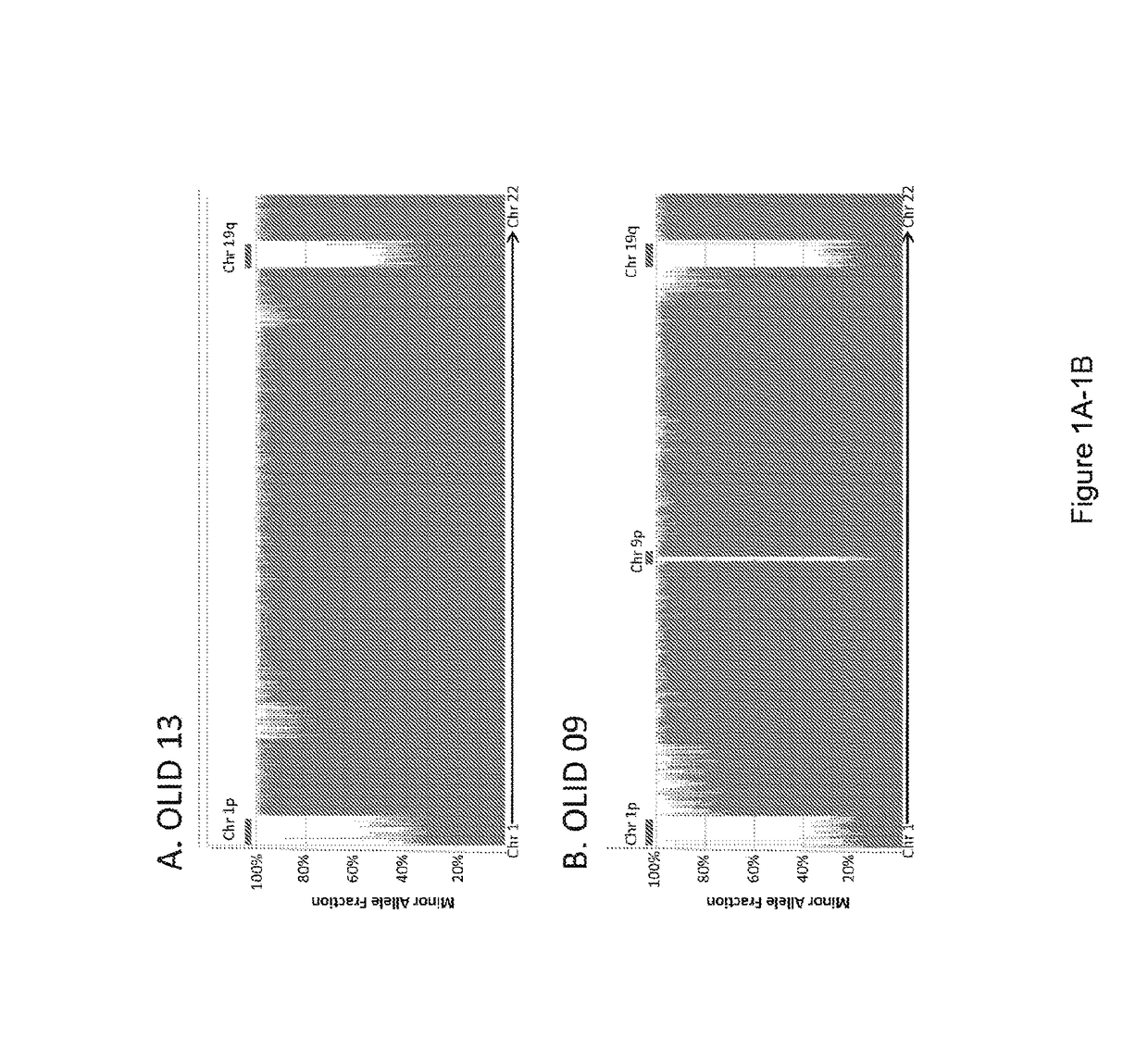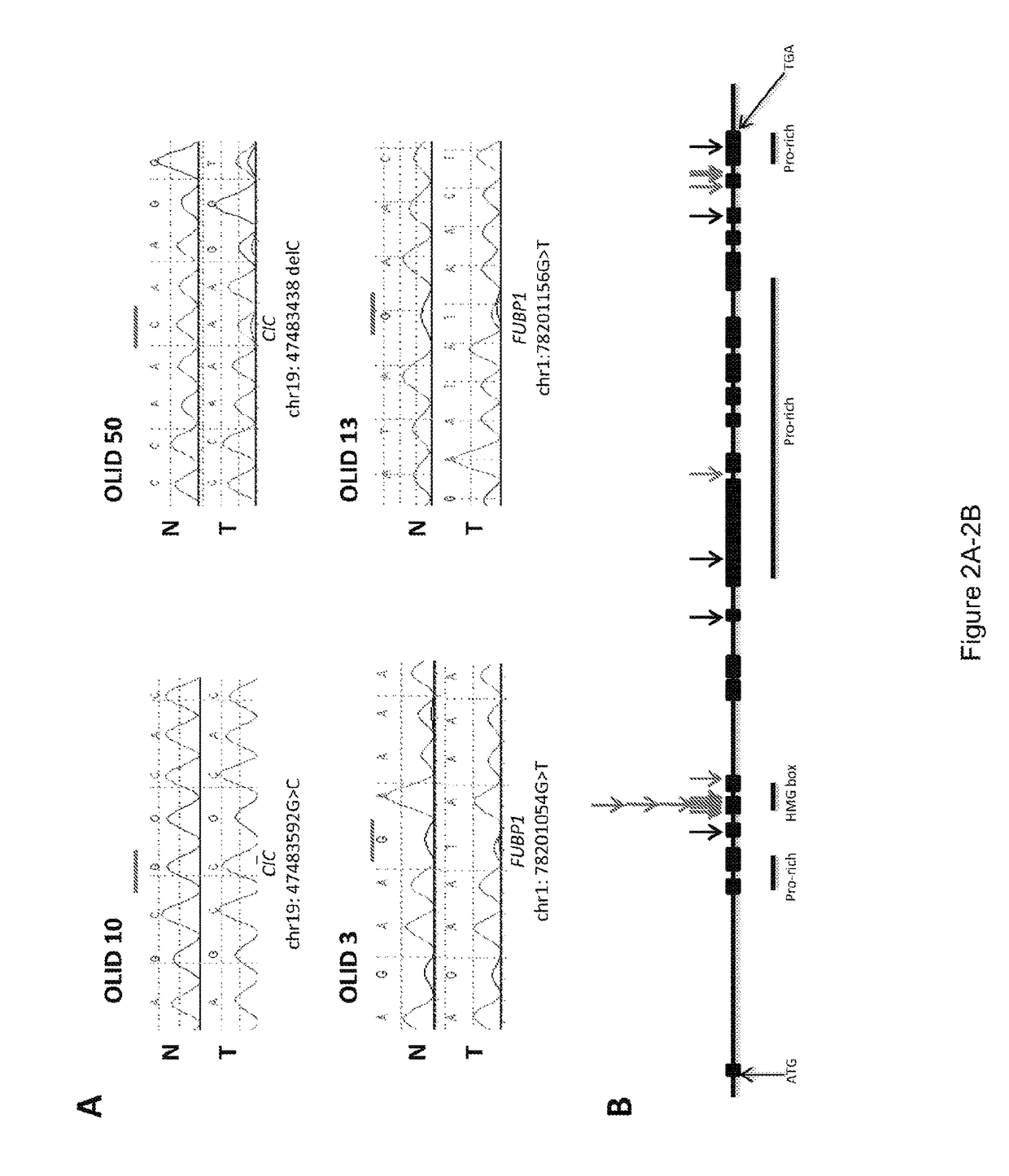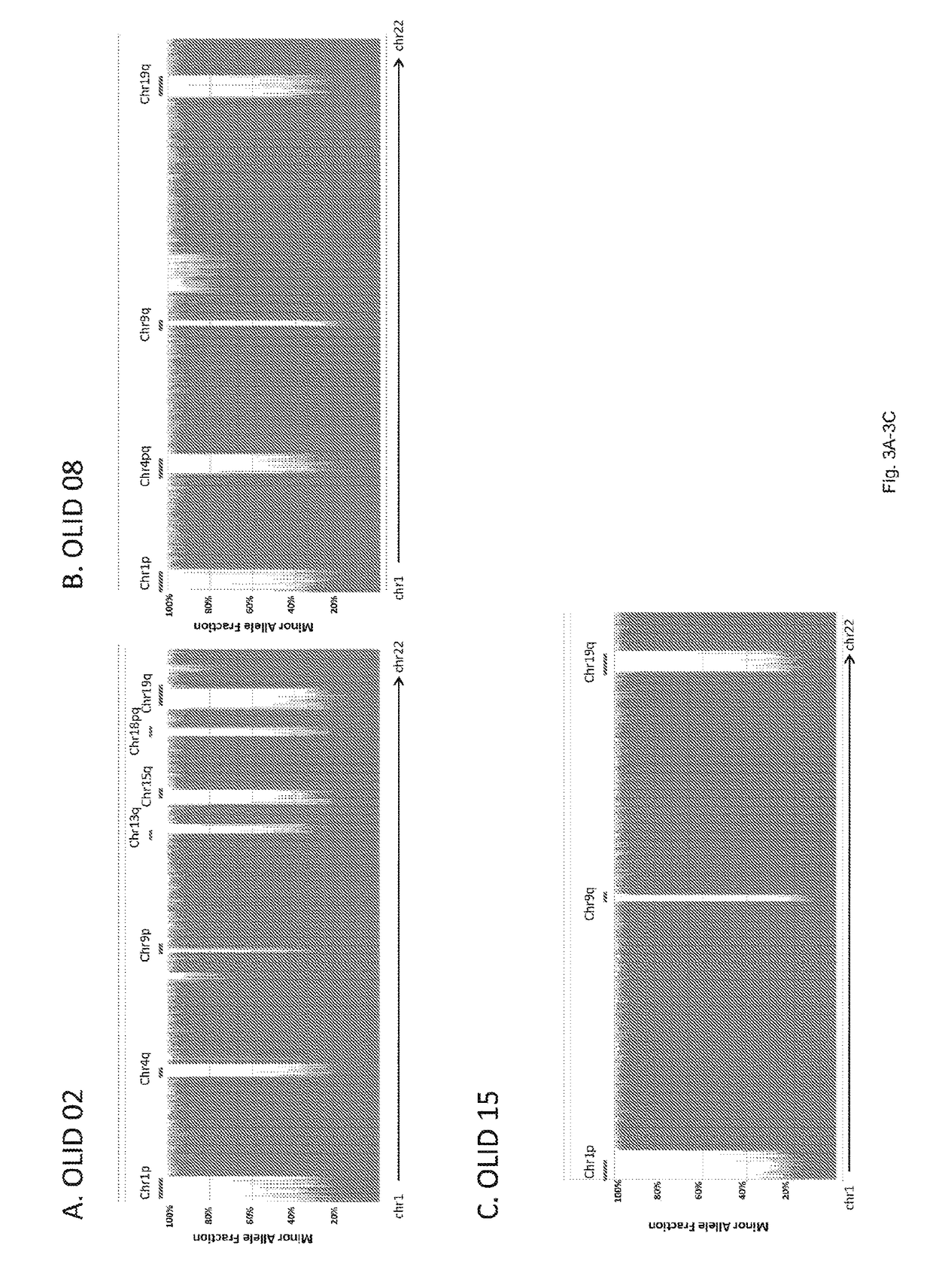Oligodendroglioma drive genes
a technology of oligodendroglioma and drive genes, applied in the field of cancer, can solve the problems of difficult to clearly distinguish between these two types of brain tumors or from other brain tumors, unbalanced translocation, etc., and achieve the effects of increasing the amount of brain tumor, increasing and decreasing the amount of nucleic acids
- Summary
- Abstract
- Description
- Claims
- Application Information
AI Technical Summary
Benefits of technology
Problems solved by technology
Method used
Image
Examples
example 1
[0035]We sequenced the coding exons of 20,687 genes in DNA from seven anapiastic ODs and compared them to the sequences of DNA from normal leukocytes of the same patients. All seven tumors had been shown to have LOH of chromosome 1p and 19q using approved clinical assays. The clinical characteristics of the patients and their tumors are listed in FIG. 4; Table s1. DNA from enriched neoplastic cells and matched normal cells was sheared and used to prepare fragment libraries suitable for massively parallel sequencing (10). The coding sequences of the targeted genes were captured with the 50 MB SureSelect Enrichment System and sequenced using the Illumina HiSeq platform. The average coverage of each base in the targeted regions was high (135-fold), and 94% of the bases were represented by at least 10 reads (Table 1).
Table 1A and 1B: Summary of Sequence Analysis of Oligodendrogiomas
[0036]
TABLE 1ACoverage SummaryTumorNormalBases sequenced (after12.3 ± 4.0 × 10911.8 ± 1.3 × 109quality fil...
example 2
[0039]We have previously described methods for the accurate identification of somatic mutations in next-generation sequencing data from Illumina instruments (14, 15). Using these stringent criteria to avoid false positive calls, we identified a total of 225 non-synonymous somatic mutations, affecting 200 genes, among the seven tumors (FIG. 5; FIG. 5; Table s2). There were an average of 32.1±10.7 non-synonymous somatic mutations per tumor (Table 1), similar to the number found in the most common type of adult brain tumor (glioblastoma, 35.6 non-synonymous somatic mutations per tumor (16)).
[0040]There were a number of notable mutations identified in these seven tumors. Three tumors with mutations in PIK3CA were identified, each occurring in a previously defined “hotspot” for recurrent mutations in other tumor types (FIG. 5; Table s2) (17). PIK3CA encodes the catalytic subunit of the PI3Kα lipid kinase (18-20). A fourth tumor had a 3-base pair deletion in PIK3R1, the gene encoding the ...
example 3
[0041]One of the major goals of this study was the investigation of the target gene(s) on chromosome 1 or 19. By analogy with other tumor suppressor genes (26), (27) we expected that the residual copy of the target gene(s) would contain mutations in most tumors with LOH of the relevant region. On chromosome 1p, there were eight somatically mutated genes, but only two with mutations in more than one tumor: FUBP1 (Far Upstream Element [FUSE] Binding Protein 1) and NOTCH2 (FIG. 5; Table s2). On chromosome 19q, there were three genetically altered genes identified, two of which were mutated in a single tumor each. The third, CIC (homolog of the Drosophila capicua gene), was mutated in six of the seven tumors. In each of these six cases, the fraction of mutant alleles was high (80.5±10.7%), consistent with loss of the non-mutated allele. The mutations were confirmed to be homozygous by Sanger sequencing (FIG. 2A).
PUM
| Property | Measurement | Unit |
|---|---|---|
| refractory | aaaaa | aaaaa |
| time | aaaaa | aaaaa |
| mass spectroscopic | aaaaa | aaaaa |
Abstract
Description
Claims
Application Information
 Login to View More
Login to View More - R&D
- Intellectual Property
- Life Sciences
- Materials
- Tech Scout
- Unparalleled Data Quality
- Higher Quality Content
- 60% Fewer Hallucinations
Browse by: Latest US Patents, China's latest patents, Technical Efficacy Thesaurus, Application Domain, Technology Topic, Popular Technical Reports.
© 2025 PatSnap. All rights reserved.Legal|Privacy policy|Modern Slavery Act Transparency Statement|Sitemap|About US| Contact US: help@patsnap.com



